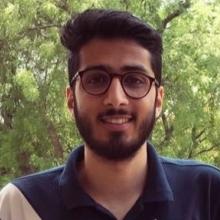Project Dastaan uses digital experiences to create a virtual homecoming for the survivors of the Subcontinent's bloody partition in 1947.
81-year-old Ishar Das Arora always dreamed of travelling back to Bela – a small village in the Punjab province of modern day Pakistan – where he was born. Das was only seven when the bloody partition of the Indian Subcontinent in 1947 forced him to leave his ancestral house and migrate to India.
For more than 70 years, he yearned to get a glimpse of the lanes of his childhood village again, but a hostile political environment and tough visa regime between the two countries meant there was no return to his roots.
His dream was finally realised through Project Dastaan – an initiative that aims to give emotional closure to the people who were forced to leave during the bloody events of partition, by connecting them to their childhood homes and communities through digital experiences.
The partition of the Subcontinent, which led to the formation of India and Pakistan as nation states, was the largest forced migration in human history with an estimated 15 million people leaving their homes and over a million losing their lives.
Ever since then, partition continues to haunt the population of both countries. The remaining survivors don’t see the possibility of going back to their homes, but Project Dastaan aims to make that return possible through Virtual Reality (VR).
"This project is about giving them (the survivors) some closure," says 24-year-old Sparsh Ahuja, Das' grandson and also the founder of the project.
Both Ahuja's grandfathers migrated from Pakistan to India in 1947, so stories about the trauma partition left always featured on family dinner table conversations – which ultimately proved to be the driving force behind Project Dastaan.
"That yearning which my grandparents had to reconnect with their roots, inspired me to start this (project). This is also an attempt to reconnect with my own roots," adds Ahuja, who along with his Pakistani colleague Ameena Malak started the non-profit venture in 2018.

The project was conceptualised as Ahuja and Malak exchanged their grandparents’ stories of partition and realised that their grandparents had travelled almost “identical journeys in opposite directions”. They felt a need to take them back to their ancestral villages on the opposite sides of the border, but hostile political relations between India and Pakistan, not to mention the old age of their grandparents, almost made the return impossible.
Soon their friends Sam Dalrymple, a Sanskrit and Persian Scholar from Oxford University, and Saadia Gardezi, a Pakistani journalist, joined them and Project Dastaan took off.
'Immersive experience' for survivors
The project uses volunteers in India and Pakistan to track down specific locations and then film and edit them into digital experiences that are shown to the survivors through VR. The aim is to “immortalise the experiences of the Partition generation” and provide a closure to different generations.
"We record the stories of survivors, and then go back to fieldwork in India and Pakistan. We find their villages and film the locations there using 360 degree cameras with a GoPro. We then curate those experiences for them by making a bespoke 360 VR experience through VR glasses or goggles," explains Gardezi, co-founder of the project.
These digital experiences allow survivors to relive the ambience and surroundings they associated with their ancestral places.
"Sometimes all that’s left is an old well, and sometimes you still have those old mosques, mandirs and gurudwaras completely intact, and sometimes the entire neighbourhood. Several times we have even found people who remember our partition witnesses," adds Gardezi.
Gardezi's participation in the ambitious digital project is itself inspired by a personal connection. She grew up listening to the stories of refugee camps in Lahore where her grandmother used to be a volunteer.
"So I have these very strong childhood memories of her telling me about those times. And when you get to know the sacrifices of that generation, you do wish to do something for them."
Apart from providing immersive virtual experiences to partition survivors, Project Dastaan has also created an interactive animated VR documentary experience called 'Child of Empire' – which puts one in the shoes of a migrant in 1947, and navigates “sectarianism, colonialism and identity” at a time of outbreak in Hindu-Muslim violence.

Emotional closure
One of the fascinating things the project has been able to do for some people, says Gardezi, is to close the loop of the memories and the nostalgia that the survivor generation had for their local homes.
"I think we’ve definitely been able to bring emotional closure especially when we reconnect people to not just places but other people that they’ve lost," she says.
The bloody demarcation of boundaries in 1947 and eventual migration of millions of people has in many ways influenced the socio-political landscape of India and Pakistan, the marks of which are evident even today.
But in the debates surrounding it, which usually occur in political corridors, the personal experience of millions who crossed the border to their new homes have to a great extent been ignored.
"The project touches on personal stories. Our efforts do definitely provide that closure to the individuals but the aim is also not to re-traumatise," says Dalrymple.
"Some people have bitter memories and don’t want to go back to those times. But sometimes we get second or third generation migrants asking us to do a VR return for their grandparents," he adds.
Now, as the global pandemic has restricted physical mobility and very little research and ground work is possible, the project members say they are finding it extremely difficult to help every survivor.
"We have so many requests from people to try to find their homes, that we just don't have the resources to actually track and find all of those locations and create so many VR experiences,” said Gardezi.
“So what we are currently doing is we are trying to get as many as we can.”

















0 Comments